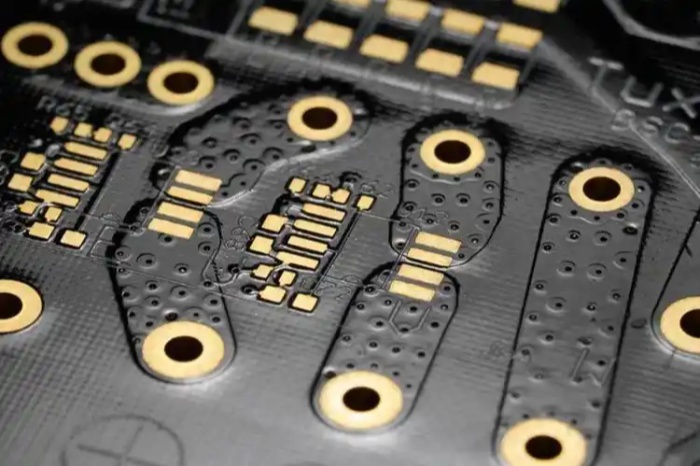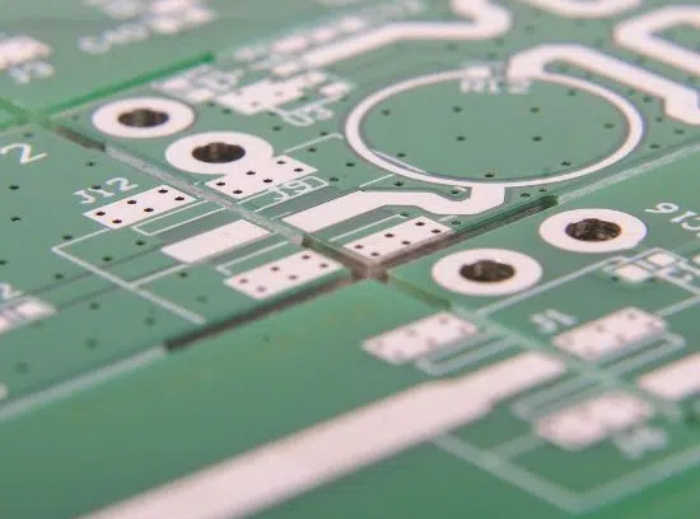Categories
Conductive hole Via hole is also known as guide hole, in order to meet customer requirements, PCB (printed circuit board) guide hole must be plug hole, after a lot of practice, change the traditional aluminium sheet plug hole process, with white net to complete the circuit board board surface resist welding and plug hole. Stable production and reliable quality.
Via hole through the hole to connect the line with each other the role of conduction, the development of the electronics industry, but also to promote the development of PCB, but also on the production process of printed circuit boards and surface mount technology to put forward higher requirements. via hole plug hole process should come into being, at the same time should meet the following requirements:
1. Copper can be in the lead hole, solder resist can be plugged or not plugged;
2. The lead hole must have tin-lead, a certain thickness requirements (4 microns), there shall be no solder resist ink into the hole, resulting in the hole hidden tin beads;
3. Guide hole must have solder resist ink plug hole, opaque, no tin ring, tin beads and flat and other requirements.
With the development of electronic products to ‘light, thin, short, small’ direction, PCB also to high-density, high-difficulty development, so there are a large number of SMT, BGA PCB, and customers in the placement of components required to plug holes, the main five roles:
1. To prevent the PCB over wave soldering tin from the lead hole through the component surface resulting in a short circuit; in particular, when we put the over-hole on the BGA pad, it is necessary to do plug holes, and then gold-plated processing, to facilitate the welding of BGA.
2. Avoid flux residue in the via hole;
3. Electronic factory surface mounting and component assembly is completed after the completion of the PCB in the test machine to suck the vacuum to form a negative pressure before completion:
4. To prevent the surface solder paste into the hole caused by false soldering, affecting the placement;
5. Prevent the wave soldering tin beads popping out, resulting in a short circuit.

Realisation of conductive hole plugging process
For surface mount boards, especially BGA and IC mounting on the through-hole plug hole requirements must be flat, convex and concave plus or minus 1 mil, there shall be no through-hole edge of the red on the tin; through-hole hidden tin beads, in order to achieve customer requirements, through-hole plug hole process can be described as a variety of process, the process is particularly long, the process of controlling the difficult, and often in the hot air levelling and green oil resistance to soldering experiments when the oil; curing burst oil and other problems occur. The process is very long and difficult to control. Now according to the actual conditions of production, PCB various plug hole process is summarised in the process and the advantages and disadvantages of some comparison and elaboration:
Note: The working principle of hot air levelling is the use of hot air to the surface of the printed circuit board and the hole in the excess solder removed, the remaining solder evenly covered in the pad and non-resistant solder lines and surface package points, is one of the ways of surface treatment of printed circuit boards.
1. Hot air levelling and hole plugging process
This process is: plate surface welding → HAL → hole plugging → curing. The use of non-hole plugging process for production, hot air levelling with an aluminium sheet screen or ink-blocking network to complete the customer's requirements to plug all the holes to be plugged through the hole plugging. Plugging ink can be used photographic ink or thermosetting ink, in the case of ensuring the consistency of the wet film colour, plugging ink is best to use the same ink with the board surface. This process can ensure that no oil will fall out of the guide hole after hot air levelling, but it is easy to cause the plug hole ink to pollute the board surface and uneven. It is easy to cause soldering (especially in BGA) when the customer is mounting. So many customers do not accept this method.
2. Plugging process before hot-air levelling
2.1 Plug holes with aluminium, curing, grinding plate after the transfer of graphics
This process with CNC drilling machine, drilling the aluminium sheet to be plugged holes, made of mesh, plug holes, to ensure that the guide hole plug hole full, plug hole ink plug hole ink, can also be used thermosetting ink, which must be characterized by a large hardness, resin shrinkage changes are small, and the wall of the hole with a good combination of force. Process flow: pre-treatment → plug holes → grinding plate → graphic transfer → etching → plate solder resist
With this method can ensure that the through-hole plug holes flat, hot air levelling will not have the burst of oil, hole side of the oil and other quality issues, but this process requires a one-time thickening of copper, so that the hole wall thickness of copper to meet the customer's standards, so the whole plate copper plating requirements are very high, and the performance of the grinding machine also has high requirements to ensure that the copper surface of the resin is completely removed, the copper surface is clean, not be contaminated. Many PCB factories do not have a one-time copper thickening process, as well as the performance of the equipment does not meet the requirements, resulting in the use of this process in the PCB factory is not much.
2.2 Plug holes in the aluminium sheet and then directly screen print the solder resist on the board surface.
This process uses CNC drilling machine, drilling out the aluminium sheet to be plugged holes, made of screen, installed in the screen printing machine for plugging holes, after completion of plugging holes shall not be parked for more than 30 minutes, with a 36T screen direct screen printing board surface resistance welding, the process is: pre-treatment - plugging holes - - screen printing - pre-drying - exposure a development - curing -Screen printing - pre-drying - exposure a development - curing
With this process to ensure that the through-hole cover oil is good, smooth plug holes, wet film colour is consistent, hot air leveling to ensure that the through-hole is not on the tin, the hole does not hide the tin beads, but it is easy to cause the curing of the hole ink on the pads, resulting in poor weldability; hot air leveling of the edge of the through-hole blistering off the oil, the use of this process is more difficult to control the production of the process must be used by process engineers with a special process and parameters in order to ensure that the quality of the plug holes.
2.3 Plug holes in the aluminium sheet, develop, pre-cure, grind the plate and then carry out resistance welding on the surface of the plate.
With CNC drilling machine, drilling the aluminium sheet required to plug holes, made of screen, installed in the shift screen printing machine for plug holes, plug holes must be full, the two sides of the protruding for the best, and then after curing, grinding plate for the plate surface treatment, the process is: pre-treatment - plug holes in a pre-drying - - developing - pre-curing - - plate surface resistance welding. -Developing - pre-curing - board surface welding resistance
Because of this process using plug hole curing can ensure that HAL after the hole does not fall off the oil, burst oil, but after HAL, the hole hidden tin beads and lead hole tin is difficult to completely solve, so many customers do not receive.
2.4 The board resistance welding and hole plugging are completed at the same time.
This method uses 36T (43T) screen, installed in the screen printing machine, using pads or bed of nails, in the completion of the board at the same time, all the guide holes plugged, the process is: pre-treatment - screen printing - pre-drying - exposure - developing - curing.

This process is short, high utilisation rate of equipment, can ensure that the hot air levelling after the hole does not fall off the oil, the guide holes do not tin, but due to the use of silk screen for plugging the holes, in the hole in the memory of a large amount of air, in the curing, the air expands, breaking through the solder resist film, resulting in hollow, uneven, hot air levelling will have a small number of guide holes hide tin.
Related Posts:
1.Through-hole technology Assembly.
2.How to Choose PCB Suppliers?
3.What is a halogen-free PCB board?
4.BGA PCBs: The Future of High-Density Circuitry
5.Top 10 PCB Circuit Board Manufacturers in China
Welcome to consult our sales engineer with BOM list and Gerber file